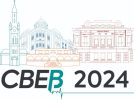Plenárias

Exploring The Ultrasound Of The Future – Diagnostics, Therapeutics And Theranostics In Cardiovascular, Cancer And Neurological Disease
Prof. Elisa E. Konofagou, PhD
Department of Biomedical Engineering, Columbia University, New York, NY
Department of Radiology, Columbia University, New York, NY
Ultrasound has been in the clinic as an imaging and therapeutic modality for over four decades. In imaging, elasticity imaging has been capable of expanding the role of ultrasound imaging in the clinic by providing quantitative information on the underlying mechanical properties. Emphases of this presentation will be given on cardiovascular elasticity imaging techniques such as Myocardial Elastography, Electromechanical Wave Imaging and Pulse Wave Imaging for the characterization of mechanical and electrical cardiac properties and vascular mechanical properties, respectively, based on the intrinsic pulsational function of the heart and blood vessels. Elasticity imaging on preclinical and clinical tumor characterization in the breast and pancreas using the radiation-force technique of Harmonic Motion Imaging will also be presented.
In therapeutics, Focused Ultrasound (FUS) has been shown efficacious for applications spanning from nerve stimulation to tumor ablation over the past six decades but clinical translation has only been feasible during the last decade harnessing from MRI thermometry. The lecture will focus on ultrasound-based monitoring by depicting the associated stiffness change as well as on the morenovel advances of opening of the blood-brain barrier (BBB) for brain drug delivery towards the treatment of Alzheimer’s, Parkinson’s and brain canceras well as central and peripheral nervous system modulation.
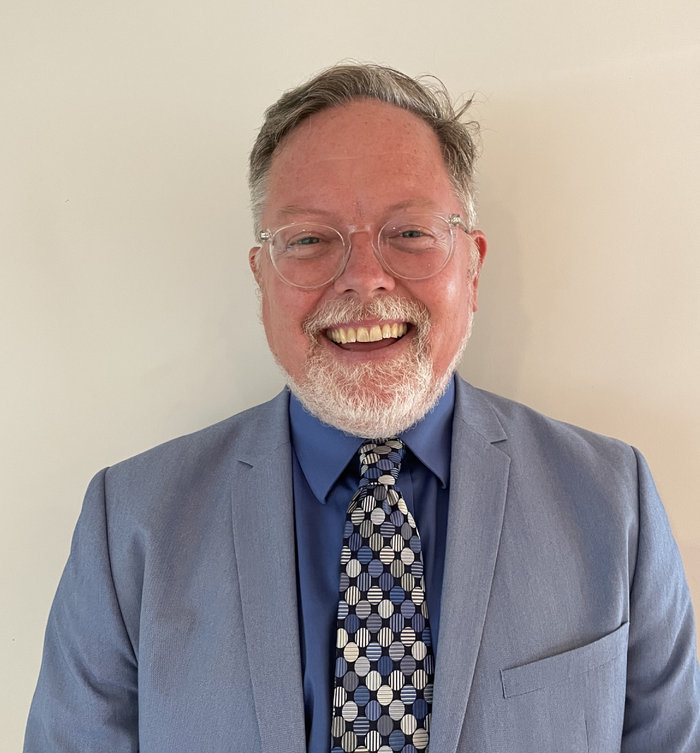
Recent Advances in Nanomedicine: Sensors, Implants,
Artificial Intelligence, Saving the Environment, Human Studies, and More !
Prof. Thomas J Webster, PhD
Nominated for Nobel Prize in Chemistry
Nanomedicine is the use of nanomaterials to improve disease prevention, detection, and treatment which has resulted in hundreds of FDA approved medical products. While nanomedicine has been around for several decades, new technological advances are pushing its boundaries. For example, this presentation will present an over 25 year journey of commercializing nano orthopedic implants now in over 30,000 patients to date showing no signs of failure (over the past 5 years). Current orthopedic implants face a failure rate of 5 – 10% and sometimes as high as 60% for bone cancer patients. Further, Artificial Intelligence (AI) has revolutionized numerous industries to date. However, its use in nanomedicine has remained few and far between. One area that AI has significantly improved nanomedicine is through implantable sensors. This talk will present research in which implantable sensors, using AI, can learn from patient’s response to implants and predict future outcomes. Such implantable sensors not only incorporate AI, but also communicate to a handheld device, and can reverse AI predicted adverse events. Examples will be given in which AI implantable sensors have been used in orthopedics to inhibit implant infection and promote prolonged bone growth. In vitro and in vivo experiments will be provided that demonstrate how AI can be used towards our advantage in nanomedicine, especially implantable sensors. Lastly, this talk will summarize recent advances in nanomedicine to both help human health and save the environment.
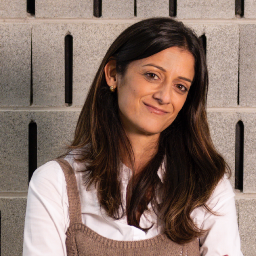
Microscale living materials for bottom-up engineering of perfusable microvascular 3D networks
Prof. Cristina C. Barrias, PhD
Principal Investigator at I3S, Universidade do Porto
Invited Associate Professor at ICBAS and ISEP
The establishment of a functional vasculature is pivotal for successful tissue development and regeneration but remains a major challenge in the field of regenerative medicine. To address this challenge, our group has been focusing on the development of bottom-up tissue engineering approaches to promote tissue vascularization. Our strategy is based on the use of specialized pre-vascularized microtissues that serve as building blocks to initiate the formation of functional microvascular beds surrounded by stromal tissue. These microtissues, consisting of endothelial progenitor cells and organ-specific fibroblasts, demonstrate high angiogenic potential when embedded in fibrin hydrogels. The immature angiogenic sprouts gradually mature into stable capillaries, enveloped by basement membrane, and undergo anastomosis to form three-dimensional networks. We have demonstrated that these microvessels can become perfused both “on-chip,” as illustrated using a biomimetic fibrin-based vessel-on-chip (VoC), and in vivo, as evidenced by the chick embryo chorioallantoic membrane assay (CAM). By integrating pre-vascularized microtissues with organoids in the VoC, we have shown that the generated microvessels progressively reach and surround the organoids, forming capillary beds extending throughout the bulk hydrogel. This facilitates the vascularization of multiple organoids and the concurrent formation of stromal tissue around them, highlighting the remarkable potential of vascular units (VUs) as building blocks for engineering microvascular networks. Such approaches have versatile applications, ranging from regenerative medicine to the development of three-dimensional in vitro models.

Multi-locus transcranial magnetic stimulation: Connecting to the networks of the human brain
Prof. Risto Ilmoniemi, PhD
Department of Neuroscience and Biomedical Engineering
Aalto University School of Science, Espoo, Finland
Transcranial Magnetic Stimulation (TMS) is a potent non-invasive method for stimulating the human brain, generating electric current in tissue and activating neurons. Precise TMS delivery to cortical targets is crucial for effective brain research, diagnosis, and therapy. Our previously developed navigated TMS (nTMS) combined with EEG enables mapping cortical reactivity and assessing effective connectivity. In nTMS, the magnetic-field-generating coil is moved (usually by hand) over the scalp while the induced electric field in the brain is displayed on top of individual magnetic resonance images (MRI). This way, the user can give pulses to desired anatomical sites in the brain and test what kind of muscle movements or EEG responses arise as a result from each stimulated location. Navigated TMS is used clinically for presurgical evaluation thanks to its ability to locate eloquent areas such as the motor cortex or language areas that should not be harmed by the surgery.
More recently, in collaboration with the University of Sao Paulo, we have developed technology called multi-locus TMS (mTMS). By simultaneously activating with variable weights multiple coils that produce different electric field patterns (basis functions), one can move the locus of stimulation without physically moving the TMS coils. Thanks to the electronic control, the stimulation site can be changed in less than millisecond, which is impossible with physical coil movement. With mTMS, we aim to utilize EEG as a feedback mechanism in a closed-loop mode, where both the targeting and timing of TMS are informed by features extracted from real-time EEG data. To ensure the reliable recording and accurate interpretation of TMS-evoked EEG signals, meticulous attention must be paid to physiological artifacts, such as those arising from muscle activation or auditory evoked responses. These artifacts must be addressed using rejection techniques, including those based on signal-space projection (SSP) or independent-component analysis (ICA). However, it is essential to exercise caution and ensure that the assumptions underlying these techniques are met. For instance, stimulus-triggered brain activity and artifacts are not inherently independent, necessitating appropriate preprocessing steps to obtain independent signal components that can be accurately separated using ICA. The efficacy of signal separation works best when artifacts are measured with high fidelity.
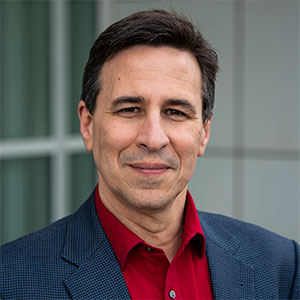
Perspective and Prospective of Biomedical Engineers and Healthcare Innovation
Prof. Newton Faria, PhD
Professor of Practice, Biomedical Engineering, Cornell University
In the fabric of our contemporary global culture, the pursuit of technological innovation stands as a central tenet. Despite formidable barriers like complexity, regulations, elusive stakeholders, intricate payment systems, and the sweep of globalization, medical technologies persist as integral contributors to this innovation surge. This presentation embarks on an exploration of the outlook and potential of biomedical engineering within this dynamic landscape, emphasizing the imperative to furnish essential infrastructure and training. It delves into the necessity of preparing biomedical engineers to serve as catalysts for healthcare innovation. The discussion also revolves around strategies to empower and leverage their exposure to design, innovation, and commercialization pathways in shaping their forthcoming career trajectories.
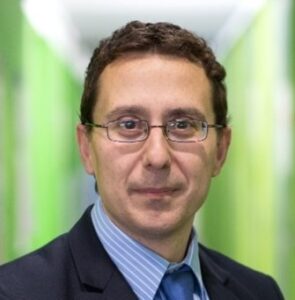
INTERFACING HUMANS WITH ASSISTIVE AND REHABILITATION TECHNOLOGIES
Prof. Dr. Dario Farina, Professor and Chair in Neurorehabilitation Engineering, Department of Bioengineering, Imperial College London, London, UK
Dario Farina is Full Professor and Chair in Neurorehabilitation Engineering at the Department of Bioengineering of Imperial College London, UK. At Imperial College, he is also Director of Research of the Department of Bioengineering, Director of the Network of Excellence in Rehabilitation Technologies, and Director of the Imperial-Meta Wearable Neural Interfaces Research Centre. He has previously been Full Professor at Aalborg University, Aalborg, Denmark, (until 2010) and at the University Medical Center Göttingen, Georg-August University, Germany, where he founded and directed the Department of Neurorehabilitation Systems (2010-2016). Among other awards, he holds a Honorary Doctorate degree in Medicine from Aalborg University, Denmark, and has been the recipient of the IEEE Engineering in Medicine and Biology Society Early Career Achievement Award, the Royal Society Wolfson Research Merit Award, the IEEE EMBS Technical Achievement Award. His research focuses on biomedical signal processing, neurorehabilitation technology, and neural control of movement. Professor Farina has been the President of the International Society of Electrophysiology and Kinesiology (ISEK) (2012-2014) and is currently the Editor-in-Chief of the official Journal of this Society, the Journal of Electromyography and Kinesiology, and an Editor for many other international Journals, including Science Advances and IEEE Transactions on Biomedical Engineering. Professor Farina has been elected Fellow IEEE, AIMBE, ISEK, EAMBES, AAIA, Sigma Xi.
